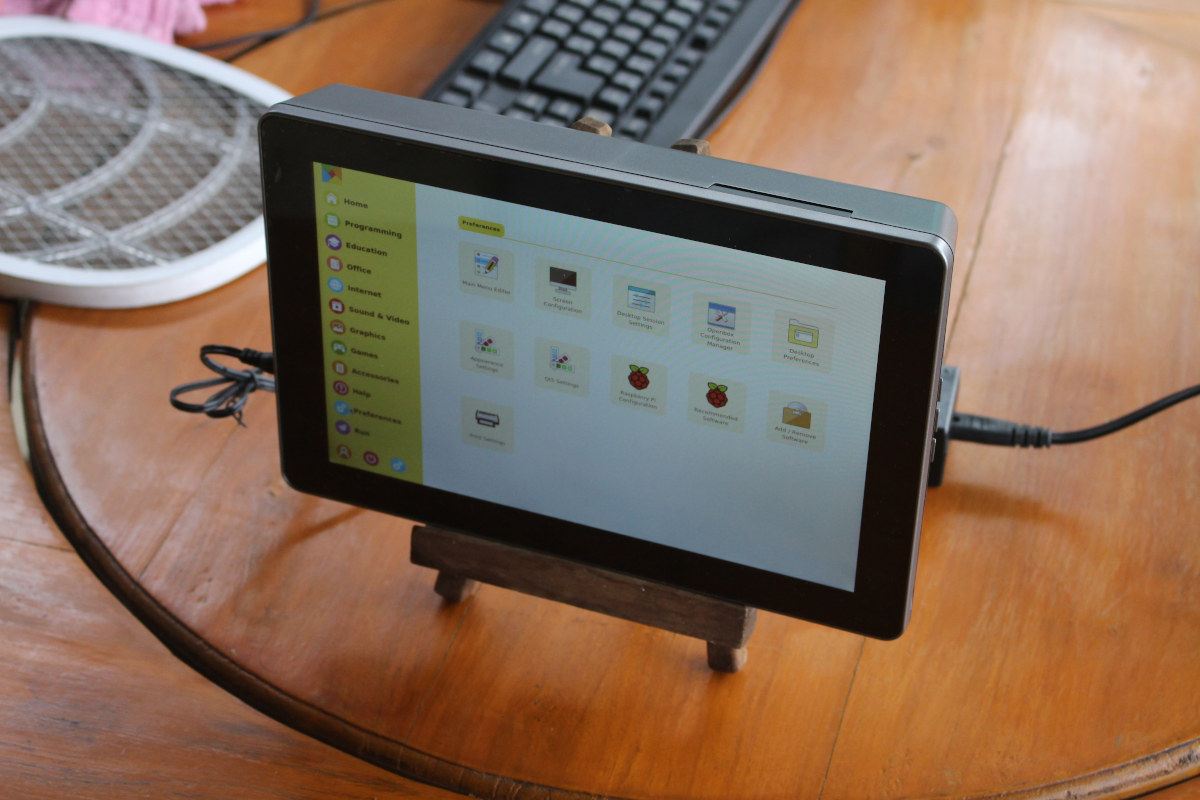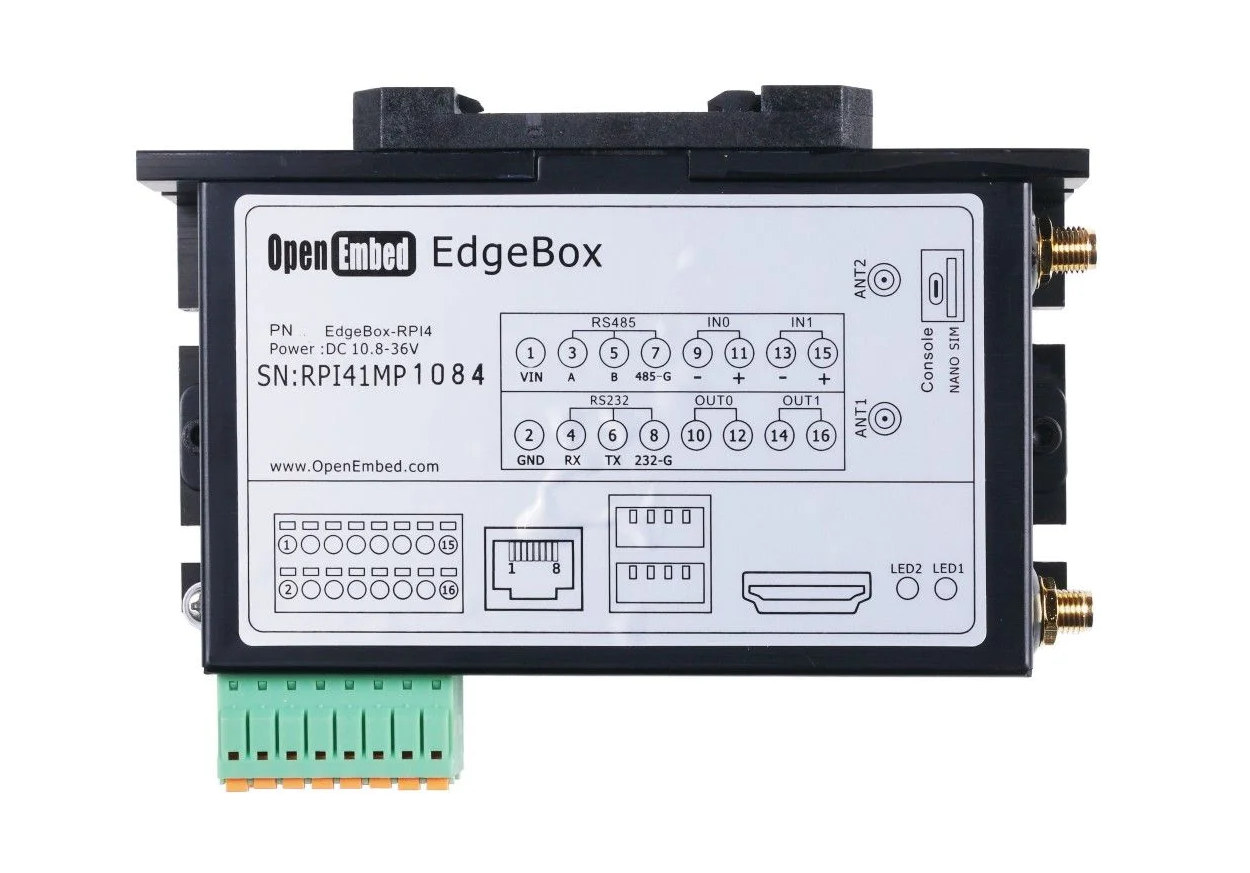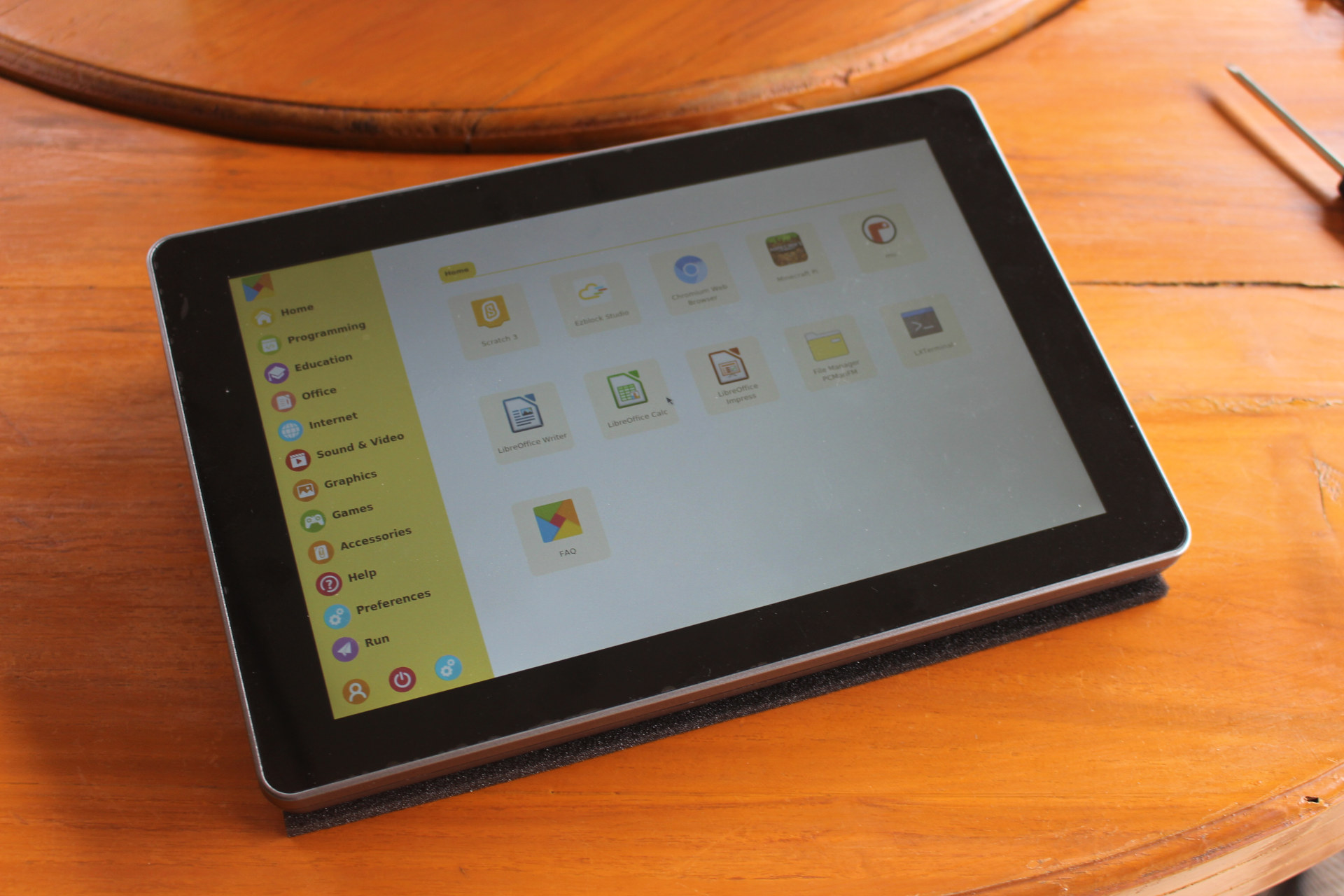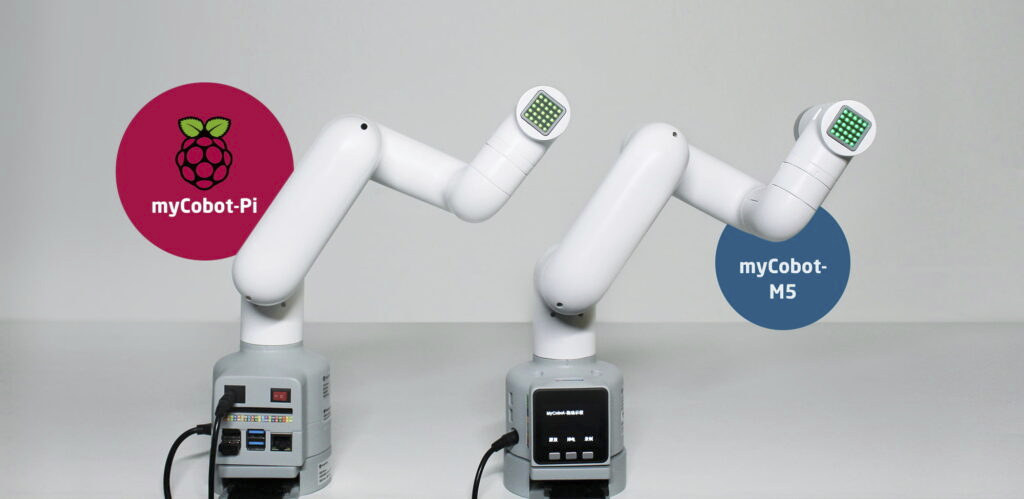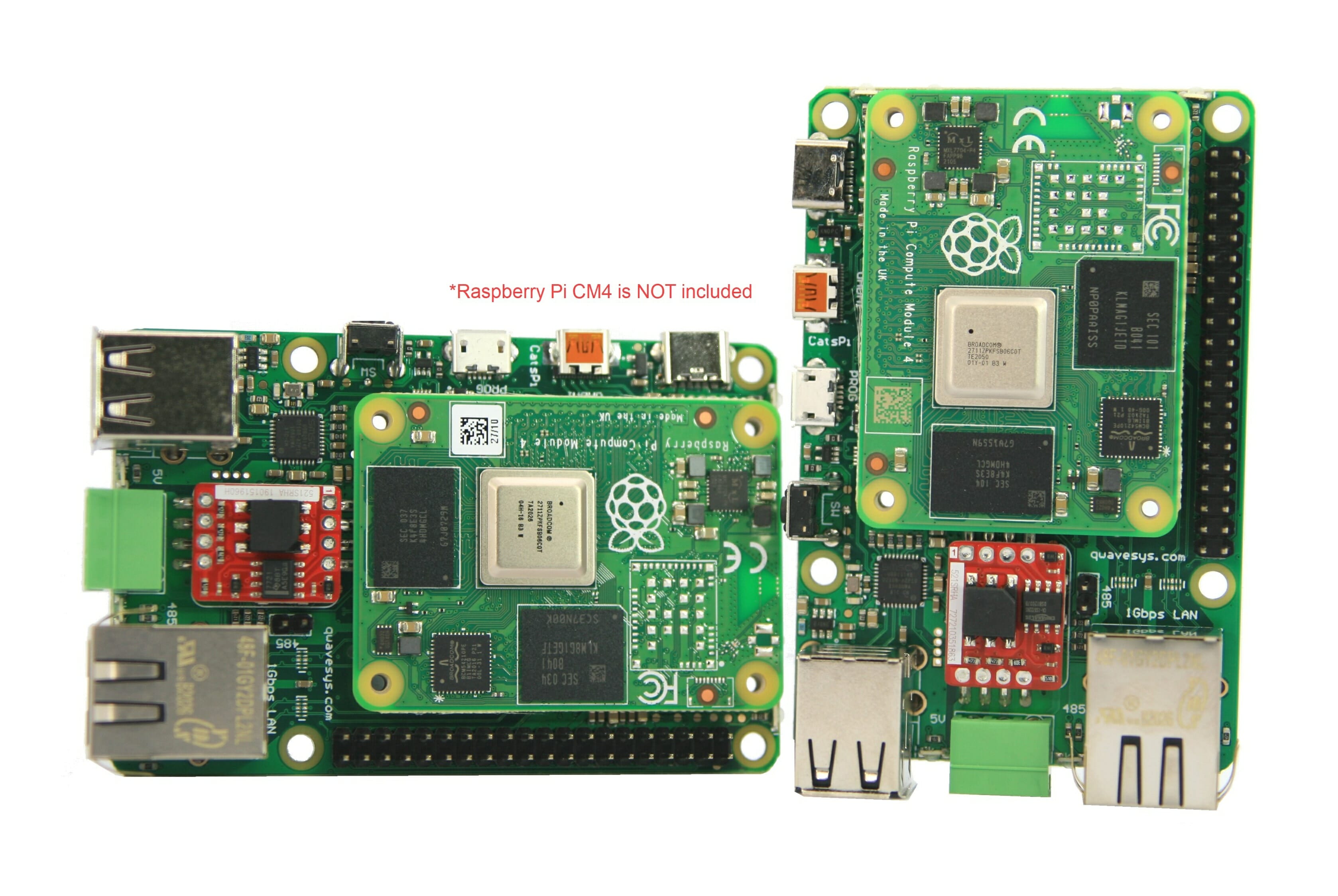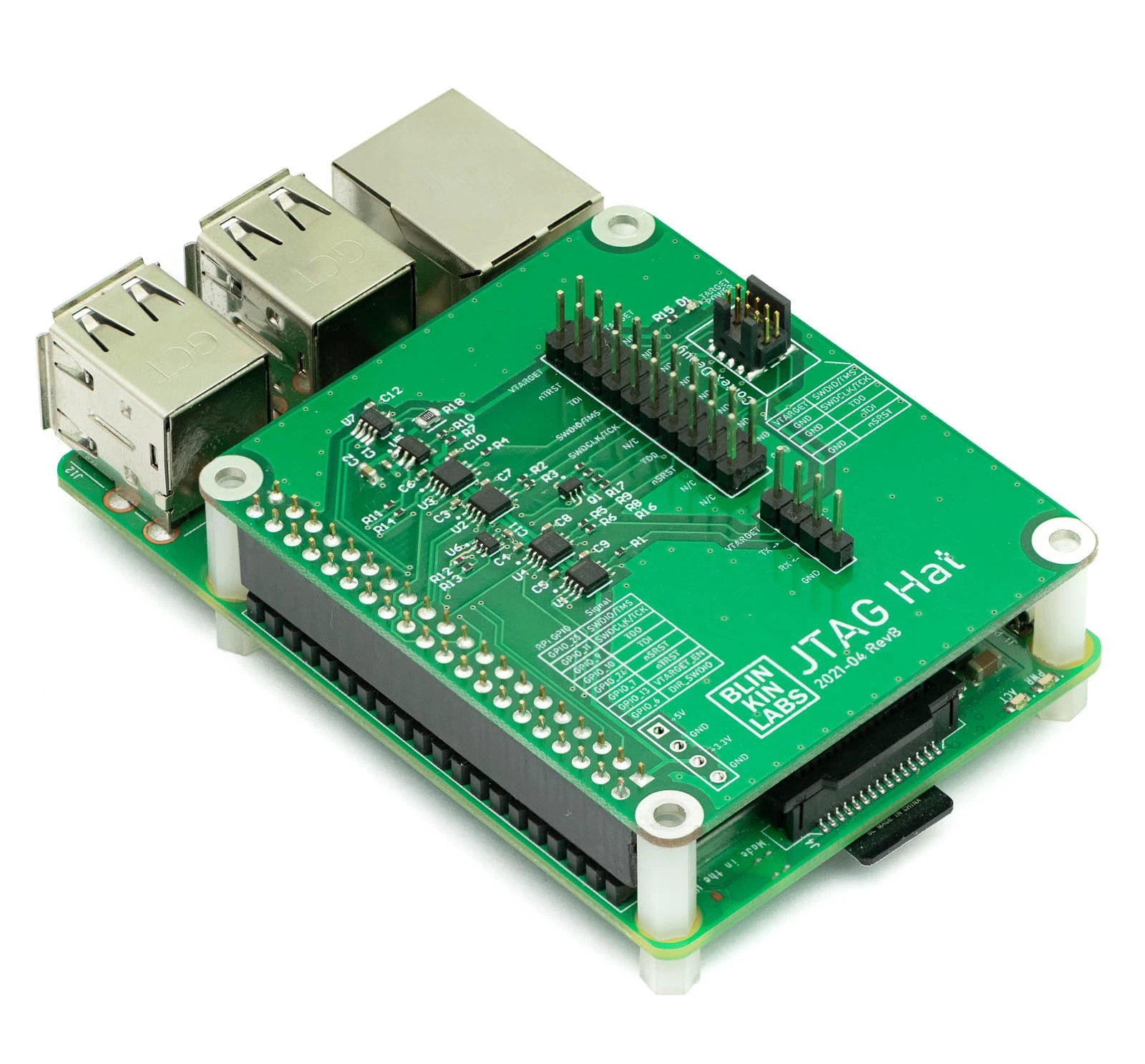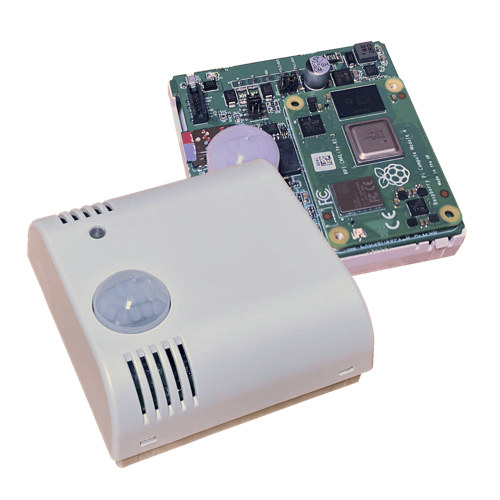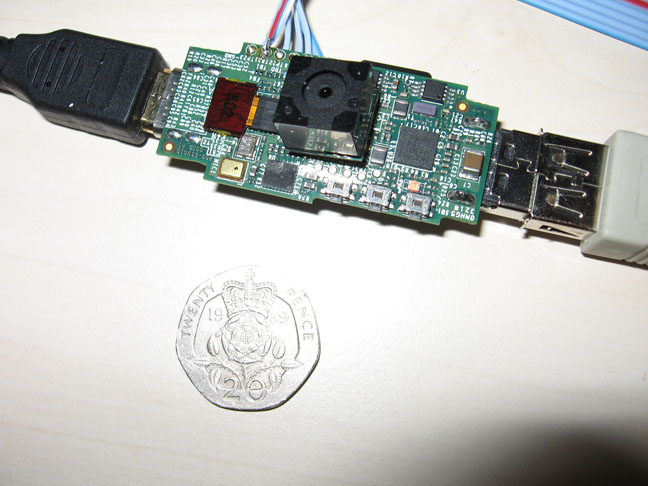I started RasPad 3 review last week with an unboxing of the tablet shell for Raspberry Pi 4, together with assembly instructions, and a first boot after flashing Raspad OS to the system. In the first part of the review, I mentioned that I’d probably focus the remainder of the review on Ezblock Studio visual programming IDE, as the rest of the software is almost the same as using a standard Raspberry Pi 4, the other difference being the touchscreen-friendly RasPad launcher. But Sunfounder explained to me it would be hard to check out Ezblock as it’s designed to control robots and other hardware platforms, and requires an extra HAT (see Kickstarter campaign) to allow the Ezblock APP to connect through Bluetooth (it cannot be directly linked to Raspberry Pi through the built-in Bluetooth). Here’s an example of a robot that is compatible with Ezblock Studio: Picar-X. Finally, I was […]
EdgeBox-RPi4 industrial controller offers RS485, RS232 interfaces, isolated DI/DO
OpenEmbed EdgeBox-RPi4 is an industrial controller based on Raspberry Pi Compute Module 4 fitted with up to 4GB RAM, 32GB eMMC flash, and a 2.4/5GHz WiFi & Bluetooth 5.0 wireless module. The controller exposes isolated RS485 & RS232 serial interfaces, as well as isolated digital inputs and outputs through a 16-pin terminal block, and provides Gigabit Ethernet and optional WiFI and 4G LTE connectivity options. EdgeBox-RPi4 specifications: SoM – Raspberry Pi Compute Module 4 (CM4) with Broadcom BCM2711 quad-core Cortex-A72 processor running up to 1.5GHz in either two default configurations: 1GB RAM, 8GB flash, no wireless module 4GB RAM, 32GB flash, dual-band WiFi 5 and Bluetooth 5 module Storage – M.2 socket for NVMe SSD up to 2TB (See expansion) I/O interfaces via 16-pin terminal block Industrial-grade isolated 2x DI (Digital Inputs), 2x DO (Digital Outputs) Industrial-grade isolated RS485 interface RS232 interface Connectivity Gigabit Ethernet RJ45 port Optional WiFI 5 […]
RasPad 3 Review – Part 1: Raspberry Pi 4 “tablet” specs, unboxing and assembly
RasPad tablet kit for Raspberry Pi 3B+ and other SBC’s was introduced in 2018, but Sunfounder has recently introduced an update, RasPad 3 that supports the more powerful Raspberry Pi 4 SBC. After seeing my review of CrowPi2 Raspberry Pi 4 education laptop, the company asked me whether I’d be interested in reviewing Raspad 3 as well. So here we are, and I’ve received a sample of the tablet kit. As usual, I’ll do a two-part review, with unboxing and assembly of the kit. Since I previously missed the RasPad 3 announcement, I’ll start by listing some of the specifications. RasPad 3 specifications Compatible board – Raspberry Pi 4B with Broadcom BCM2711 quad-core Cortex-A72 processor, up to 8G RAM Storage – MicroSD card socket Display – 10.1-inch touchscreen IPS display with 1280×800 resolution, 10-point touch Video Output – Full-size HDMI output Audio – 3.5 mm headphone jack, stereo speaker Connectivity […]
MyCobot robotic arm is offered with Raspberry Pi 4 or M5Stack ESP32 modules
Elephant Robotics’ MyCobot robotic arm was introduced last year with M5Stack Atom & Basic ESP32 modules with 6-degrees of freedom, a 250 grams max payload, available now for $599. The company has launched a new $699 version – MyCobot-Pi – with most of the same features, except for an upgrade to Raspberry Pi 4B which offers more performance and flexibility. Both versions of MyCobot arm robotic arm support accessories such as a gripper and a suction pump attachable through a LEGO connector, but while the original version – MyCobot-M5 – relies on Arduino programming, the new MyCobot-Pi runs Debian/Ubuntu and ROS operating systems with image recognition algorithms that can work with a variety of cameras. Since we’ve missed last year’s announcement, we’ll cover both models in this article. MyCobot Robotic Arm Despite the mechanical parts being the same, the specifications for MyCobot-M5 and MyCobot-Pi differ quite a lot: Controller MyCobot-M5 […]
CatsPi Industrial Lite RPi CM4 carrier board features GbE, RS485, Watchdog MCU
We’ve seen a fair deal of Raspberry Pi CM4 carrier boards, and here’s another one courtesy of QwaveSystems with CatsPi Industrial Lite board following Raspberry Pi SBC form factor/dimensions, and equipped with Gigabit Ethernet, RS485, USB ports, as well as a watchdog MCU among other interfaces and features. Contrary to what the name implies, CatsPi Industrial Lite only works with Raspberry Pi CM4 with eMMC flash, but not the CM4 Lite module since there’s no MicroSD card on the baseboard. It’s not the first Raspberry Pi Compute Module 4 carrier board with RS485, however, as we previously covered CM Hunter also including CAN and 1-wire interfaces, but QwaveSystems’ solution is more compact and mostly mechanically compatible with Raspberry Pi model B SBC’s. CatsPi Industrial Lite board specifications: Compatible SoMs – Raspberry Pi CM4 with eMMC flash only Video Output – Micro HDMI port Connectivity – Gigabit Ethernet, optional 802.11b/g/n/ac WiFi […]
JTAG Hat for Raspberry Pi eases debugging with OpenOCD
Low-level debugging can be performed with a JTAG debugger and OpenOCD open-source software, but since not everybody may have a JTAG debugger at home, some have reverted to using the Raspberry Pi as a JTAG debugger, and you’ll find instructions for cabling and installing the software on the Internet. Matt Mets of BlinkinLabs have been using the Raspberry Pi SBC and OpenOCD to debug Arm-based microcontroller boards for a while, but found it to be a pain to find jumper wires and look up the pin-outs manually each time. So he designed a JTAG Hat with properly labeled 20-pin .1″ and 1.27mm Cortex debug connectors to speed up the process. The expansion board also adds level-shifting buffers to interface with targets running at 1.8-5V, transistor-based power reset pins, a power switch for optionally supplying 3.3V to the target, a voltage/current sensor for measuring the target power consumption, and a buffered […]
Raspberry Pi CM4 based Exo Sense Pi multi-sensor device gets optional earthquake sensor
Sfera Labs’ Exo Sense Pi is a device with multiple environmental sensors based on the 2GB version of the Raspberry Pi CM4 module designed for residential and commercial applications such as environmental monitoring and data gathering, BLE positioning, indoor people and assets tracking, rooms management and access control, voice control, and more. The Exo Sense Pi devices include optional WiFI 5 and Bluetooth 5.0 LE connectivity depending on the RPI CM4 module selected, and ships with temperature, humidity, air quality (VOC), light intensity, microphone, and PIR motion sensors by default, but there’s also an optional earthquake sensor. Exo Sense Pi specifications: SoM – Raspberry Pi CM4 (16GB eMMC flash) or CM4 Lite module with 2GB RAM by default. But obviously compatible with other models. Storage – MicroSD card socket for CM4 Lite module Wireless connectivity – 2.4 GHz, 5.0 GHz IEEE 802.11 b/g/n/ac wireless; Bluetooth 5.0, BLE depending on installed […]
Flashback: This is what the Raspberry Pi USB Computer looked like 10 years ago
The first Raspberry Pi single board computer was officially launched on February 29, 2012. Raspberry Pi Model B included a Broadcom BCM2835 ARM11 processor with 256 RAM, an HDMI port, and the familiar form factor we know today. But the very first time I wrote about the board was on May 8, 2011, exactly ten years ago, with a post entitled “25 USD ARM11 Linux Computer” showing the prototype of Raspberry Pi USB Computer that looks nothing like what was launched the next year. This just looked like a stick with an HDMI port on one hand and a USB port at the other. We did not even know it was based on a Broadcom processor at the time. Those were the preliminary specifications: CPU – 700MHz ARM11 processor GPU – OpenGL ES 2.0 capable Memory – 128MB of SDRAM Storage – SD/MMC/SDIO memory card slot Video & Audio Outputs […]


